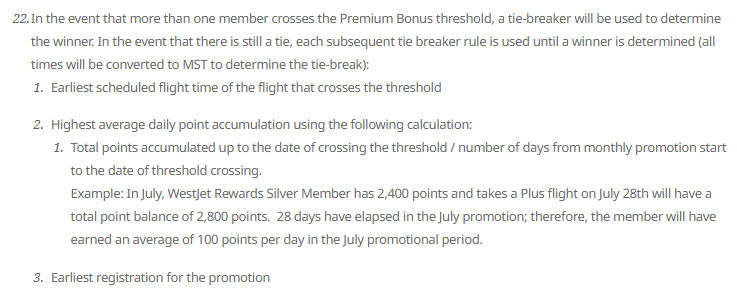As we wrap up this series, I hope that you have gotten some good insight into not only what it’s like to work in airline loyalty, but also some key concepts that you need to understand in order to succeed.
Today, we talk about the importance of Terms & Conditions (T&Cs) and why they form a guiding principle of everything that you do in the loyalty department.
What Are Terms & Conditions?
At their core, terms and conditions are the rules that govern everything that you can and can’t do. As these loyalty programs only affect program members, and not the entire population, there are no laws that rule over things like the benefits and promotions within these programs.
Therefore, the terms and conditions need to be quite robust in an attempt to account for the majority of possibilities that could occur. You’ll note that I say the majority, because quite frankly, it would be very near impossible to come up with T&Cs to address every potential issue.
There are two ways to view T&Cs: one from the loyalty program’s point of view, and the other, from the consumer’s.
The loyalty program is trying to make the program or promotion enticing enough to engage their members and potentially attract new members, but also strict enough to protect against those seeking to game the program or promotion.
From a consumer’s perspective, if you see too many terms and conditions for a program or promotion, you may feel that it is too onerous and not worth investing your time.

Writing Terms & Conditions
Writing terms and conditions for a loyalty program or promotion can often mean the difference between success or failure.
While I worked at WestJet, I created a promotion called “Race for Rewards”, which rewarded members for participating in a first-past-the-post type promotion. The main gist of the promotion was that you earned points for every flight you took with WestJet, with more points being awarded for higher class fares.
After reaching a certain milestone, you would unlock prizes including lounge vouchers, internet flight passes, and bonus WestJet Dollars. If you were the first to reach 3,000 or 4,000 points (depending on the month of the promotion), you would earn a vacation package to Mexico.
Creating the mechanics to keep track of the points was a bit of nightmare due to the limitations of the backend systems at WestJet, but writing the terms and conditions was actually a bit of fun – I know, I’m weird.
Many of the terms and conditions of the promotion were based on already approved legal language that was commonly used in other promotions. But due to the unique nature of the promotion, many of the terms needed to be handcrafted, such as the tie-breaking term below:

Once written, the terms and conditions of the promotion needed to be vetted by the legal department to ensure that there were no gaps or omissions to the terms.
Some of the terms were written in an attempt to stop those that might attempt to “game” the promotion. For example, I guessed (correctly) that there might be some advanced routing experts that might fly a circuitous route with as many legs as possible to earn additional points in the promotion, so I included a term that limited the award of points based on the origin and destination (O&D), not on the number of legs between the O&D:

All in all, there were 24 terms and conditions associated with this promotion. It took quite a bit of time to write, test, and vet these terms, but this is very common for every promotion that you might create as part of a loyalty team.
Protecting Against “Gamers”
In the section above, I mentioned that loyalty programs try to write T&Cs to protect against those that might “game” a promotion, but what does that mean?
Well, there are many people (myself included) that read about promotions and wonder “what if”. The reason for asking this question is to see if there are any arbitrage opportunities to take advantage of within a promo, and whether those opportunities present a benefit that is worthwhile your time and effort.
You may be wondering, what do loyalty programs think about gamers? Well, it really depends on the program, but I would say that it’s fair to assume that every program out there realizes that there is a select population that is looking for every advantage, and that dealing with this group is a cost of doing business.

To me, those that can find these arbitrage opportunities or loopholes are akin to card counters playing blackjack.
Card counting is not actually illegal, because you are simply using a skill to increase the odds in your favour, but it certainly goes against the intent of the casino, which is to take all of your money.
If you are caught counting cards, you are invited to leave the casino and asked never to return, but you certainly could not be charged with anything illegal.
Such is the case with those that game loyalty promotions. Unless you are crossing the line and are committing fraud, the only protection a loyalty program has against your tactics is to write strong terms and conditions to protect against a potential weakness.
However, if the program believes that you present a risk to their program, they most certainly have the right to “exit” you from their program based on the language in their terms and conditions. Take, for example, Aeroplan’s prohibited activity T&Cs:

Notice here that Aeroplan gives itself a lot of outs, including phrases like “Aeroplan Membership is a privilege that can be suspended, revoked or terminated at any time, for any reason, and without compensation”.
There’s also the common legal phrasing of “Reasons for suspension, revocation or termination include, but are not limited to:”, meaning that even if your actions do not directly violate the word-for-word interpretation of what is not allowed, the program still can use its own discretion to exit you from the program, without justification.
You’ll find that almost every loyalty program out there will have similar terms to protect against the unknown. However, it should be noted that while these terms and conditions give the loyalty programs a lot of flexibility, whether they hold up under a lawsuit is a whole other question.
The Limitation of Terms & Conditions
When a loyalty program wishes to exit someone they deem to be detrimental, they almost always consult with their legal department before doing so. The role of the legal department is to determine whether the choice to exit the member is a wise one, or if it could potentially open them up to a legal claim.
Let’s say there’s a longtime Aeroplan member who had dutifully participated with the program for 10 years and accumulated 5 million Aeroplan points. Imagine if this member got on a phone call with a customer service representative and was somewhat rude in their tone.
Could Aeroplan exit that member according to the terms and conditions noted above? Legally, yes. But would the likelihood of that member laying suit against Aeroplan be high? Also yes.
If that lawsuit went to court and the judge found for the member, it opens Aeroplan up to costs and liabilities that just would not be justified, given the small indiscretion that was made by the member.
So while the terms and conditions often largely favour the program rather than the member, they aren’t a cure-all for every situation.
When Your Terms & Conditions Aren’t Strong
On Black Friday 2019, Aeroplan ran a promotion offering 1,500 miles per night for any hotels booked with cash via Aeroplan.com from November 25 to December 3, 2019.
The problem with the promotion was that there were no terms or conditions governing it. So, some industrious people began to wonder, do I actually need to stay at the hotel in order to earn my bonus miles?

With no direct mention that an actual stay was required (just a booking), people began experimenting and booking very cheap hostels in Vietnam for months at a time.
With the hostel coming in at about $8 per night and the value of the Aeroplan miles far outweighing the cost of the booking, many people began booking cheap hostels throughout South East Asia for months at a time. This essentially became a very cheap way to buy Aeroplan miles.
The immediate fallout of this was that Aeroplan froze the accounts of those that participated in the promotion outside its intended spirit, but later reversed their actions and awarded the miles to all but the most egregious violators.
It was a very fascinating real-world example of what can go wrong if you don’t have strong terms and conditions associated with your program. I had written more about this case over on PointsNerd, if you’re interested in learning more.
Conclusion
I find terms and conditions to be fascinating. They offer a look inside the mind of the person creating a promotion or the intent of the loyalty program.
As someone that is always interested in potential arbitrage opportunities, I use the T&Cs to sanity-check my assumptions to see if any terms are written expressly forbidding my intended tactic.
This might come from my many years of reading the ingredients on cereal boxes or dealing with contracts throughout my career, but this predisposition to reading somewhat boring language has served me very well.
Though this experience, I have managed to uncover many a loophole and have also used this knowledge to close them when I functioned as an employee within a loyalty program.
If you’ve stuck with this four-part series, thank you. I hope that I was able to provide you with some good information and potentially give you a look behind the curtain of airline loyalty.




















Loved this inside series.
As someone who also drafts terms and conditions for contests, promotions and programs, I see my role as keeping the game fair. Fair for the customers so they get a shot at the Big Prize of course; but also fair for the Company or Sponsors who are putting up the prize money.
I’ve noted that the Marketing Managers don’t like lengthy rules and insist that all customers want to engage in fair play only. This is a challenge for me to prove how some devious minds work!
I very much appreciate reading someone else’s perspective on this issue. Thanks.
Great articles Jayce!! I really wondering though with very smart ppl like yourself and other genius’, how many the loop holes and ins/outs you guys really know but are afraid to share. I’ve heard it’s even a bigger game in the states. But thanks for sharing what you do. I also find it a fascinating sometimes fun “game.”
I am reminded of the adage “takes one to know one.” It takes a gamer to know a gamer and that’s why Loyalty Departments are hiring points and miles gamers.